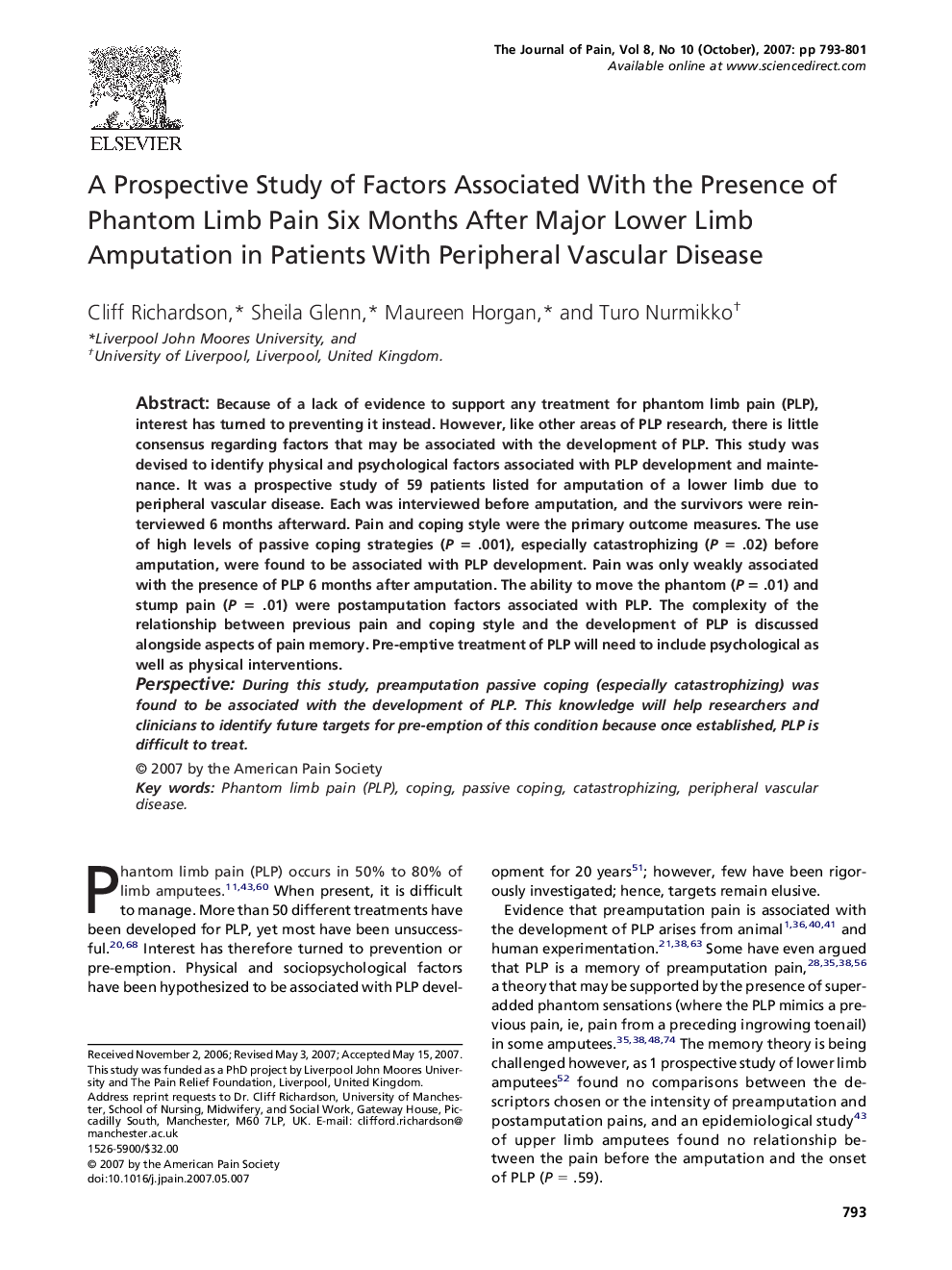| Article ID | Journal | Published Year | Pages | File Type |
|---|---|---|---|---|
| 2735097 | The Journal of Pain | 2007 | 9 Pages |
Because of a lack of evidence to support any treatment for phantom limb pain (PLP), interest has turned to preventing it instead. However, like other areas of PLP research, there is little consensus regarding factors that may be associated with the development of PLP. This study was devised to identify physical and psychological factors associated with PLP development and maintenance. It was a prospective study of 59 patients listed for amputation of a lower limb due to peripheral vascular disease. Each was interviewed before amputation, and the survivors were reinterviewed 6 months afterward. Pain and coping style were the primary outcome measures. The use of high levels of passive coping strategies (P = .001), especially catastrophizing (P = .02) before amputation, were found to be associated with PLP development. Pain was only weakly associated with the presence of PLP 6 months after amputation. The ability to move the phantom (P = .01) and stump pain (P = .01) were postamputation factors associated with PLP. The complexity of the relationship between previous pain and coping style and the development of PLP is discussed alongside aspects of pain memory. Pre-emptive treatment of PLP will need to include psychological as well as physical interventions.PerspectiveDuring this study, preamputation passive coping (especially catastrophizing) was found to be associated with the development of PLP. This knowledge will help researchers and clinicians to identify future targets for pre-emption of this condition because once established, PLP is difficult to treat.
